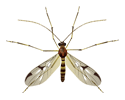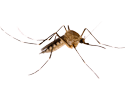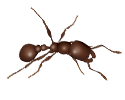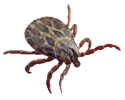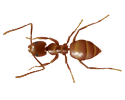How To Deal With Bees On Your Property
The bee. Sometimes the stuff of horror movies, able to send people with allergies to them and even those without screaming in terror and waving their arms madly around them. The sting of the bee can certainly be an uncomfortable reminder that Mother Nature has her own rules. They can produce pain and swelling in the area of the sting. If you have an allergy though, the sting of a bee can be a serious danger. Pain, nausea, and closing of the throat and even death if someone has a serious allergy to the venom.
You can reduce your chances of getting stung by following a few simple guidelines! Be careful with sweet drinks outside, bees are attracted to them. Also, keep food and trash containers covered. When outside, wear close-toed shoes. Stepping on an unsuspecting bee can cause them to sting. Do not wear bright colors or floral prints, which can attract bees. Finally, be careful when mowing or trimming your lawn. These activities can aggravate a hidden hive.
The bumble bee is a common sight buzzing around your flower garden. With 50 varieties of these bees in the United States the humble bumble is a highly beneficial insect. They go from plant to plant in search of food and pollinating plants and flowers making it possible for our food and flowers to grow. These bees are a welcome addition to gardens everywhere. Both the male and the female will sting if they feel cornered or threatened but usually, they are content to let humans go their own way if left alone.
When you are sitting on your porch with a nice glass of lemonade and you have a bee buzzing around your head it is very likely a carpenter bee. Carpenter bees look a lot like bumble bees. They are large with black and yellow coloring. What makes them different from the bumble bee is their shiny abdomens instead of the fuzzy bumble bee. Carpenter bees are a wood boring insect preferring unpainted wood like the frame of a structure, the eaves of a porch and trees. The female bores a channel to lay an egg, brings the newly hatched larvae to feed on and seals of the entrance to protect it, then she starts all over again for the next egg. Where the male cannot sting, the female can but since she is rarely seen it is unlikely.
The honeybee is another highly beneficial bee pollinating over 80% of our gardens throughout the country. Not natives to our shores the honey bee came here with early settlers from Europe to provide us the honey that we enjoy every day and to pollinate the crops that we eat. They are not aggressive by nature but will sting if they are provoked or to protect their hive and their queen.
Though bees can be beneficial creatures it can be dangerous to have a bee hive too close to your home. It is important to identify the type of bee and to have the hive removed entirely. They cannot just be killed, as if you do that residue of the hive, wax and honey can remain and easily attract a new swarm of bees. It is important to call in a professional pest removal service for identification and removal. If it turns out to be a honey bee hive a professional beekeeper will need to be called in to safely trap and remove the bees.
For more information on our controlling stinging insects, contact Holder’s today!
How To Deal With Bees On Your Property Serving
Houston
Beaumont | Conroe | Spring | Pasadena | The Woodlands | Richmond | Galveston
Baytown | Bryan | Cleveland | College Station | Cypress | Pearland | Sugar Land
Home » How To Deal With Bees On Your Property

